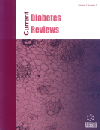
Full text loading...
We use cookies to track usage and preferences.I Understand
Diabetes mellitus (DM), arising from pancreatic β-cell dysfunction and disrupted alpha-amylase secretion, manifests as hyperglycemia. Synthetic inhibitors of alpha-amylase like acarbose manage glucose but pose adverse effects, prompting interest in plant-derived alternatives rich in antioxidants and anti-inflammatory properties.
The current review investigates plant-based alpha-amylase inhibitors, exploring their potential therapeutic roles in managing DM. Focusing on their ability to modulate postprandial hyperglycemia by regulating alpha-amylase secretion, it assesses their efficacy, health benefits, and implications for diabetes treatment.
This review examines plant-derived alpha-amylase inhibitors as prospective diabetic mellitus treatments using PubMed, Google Scholar, and Scopus data.
Plant-derived inhibitors, including A. deliciosa, B. egyptiaca, and N. nucifera, exhibit anti-inflammatory and antioxidant properties, effectively reducing alpha-amylase levels in diabetic conditions. Such alpha-amylase inhibitors showed promising alternative treatment in managing diabetes with reduced adverse effects.
The current literature concludes that plant-derived alpha-amylase inhibitors present viable therapeutic avenues for diabetes management by modulating alpha-amylase secretion by regulating inflammatory, oxidative stress, and apoptotic mechanisms involved in the pathogenesis of diabetes. Further investigation into their formulations and clinical efficacy may reveal their more comprehensive diabetes therapeutic significance, emphasizing their potential impact on glucose regulation and overall health.

Article metrics loading...

Full text loading...
References


Data & Media loading...

